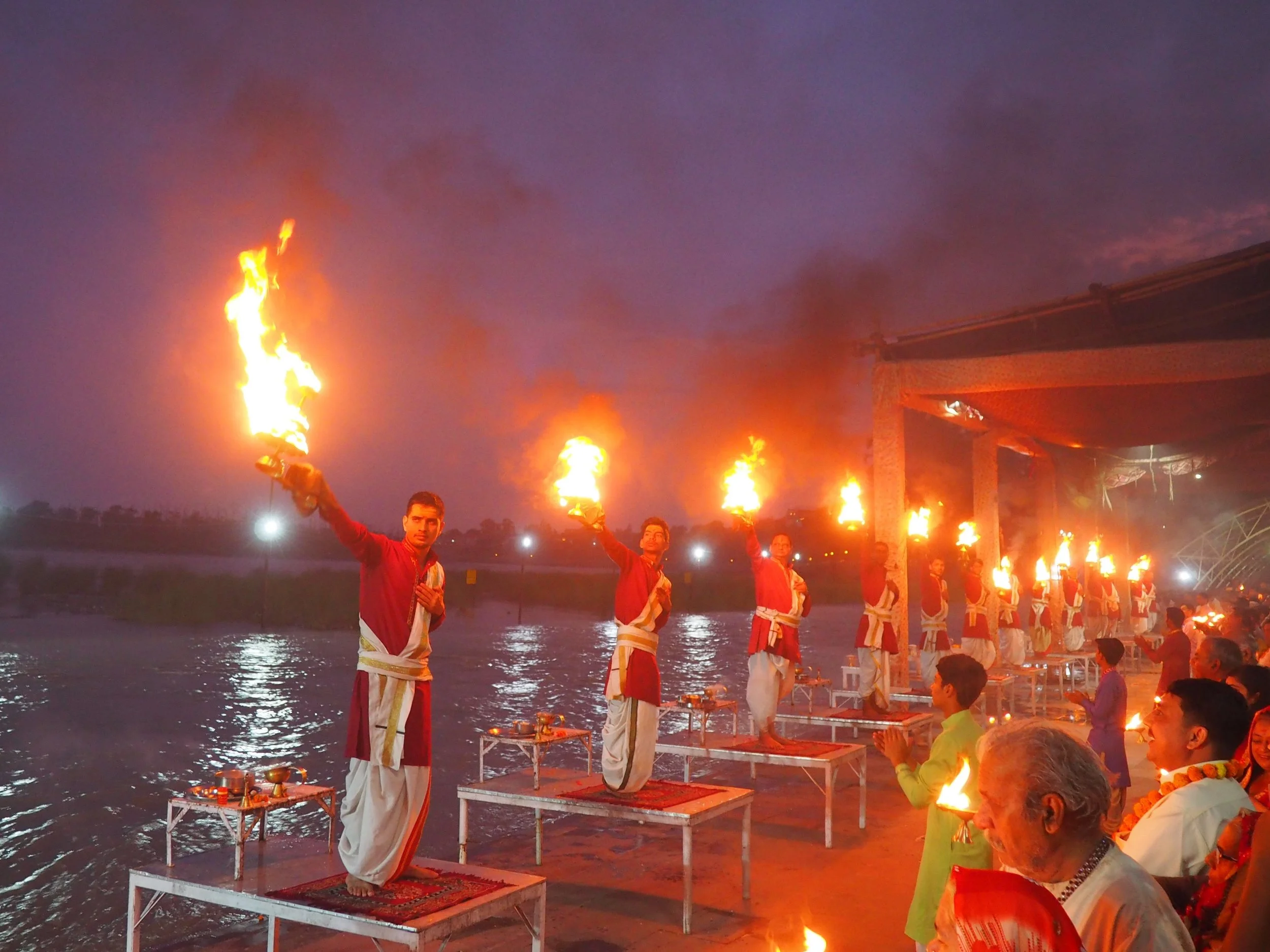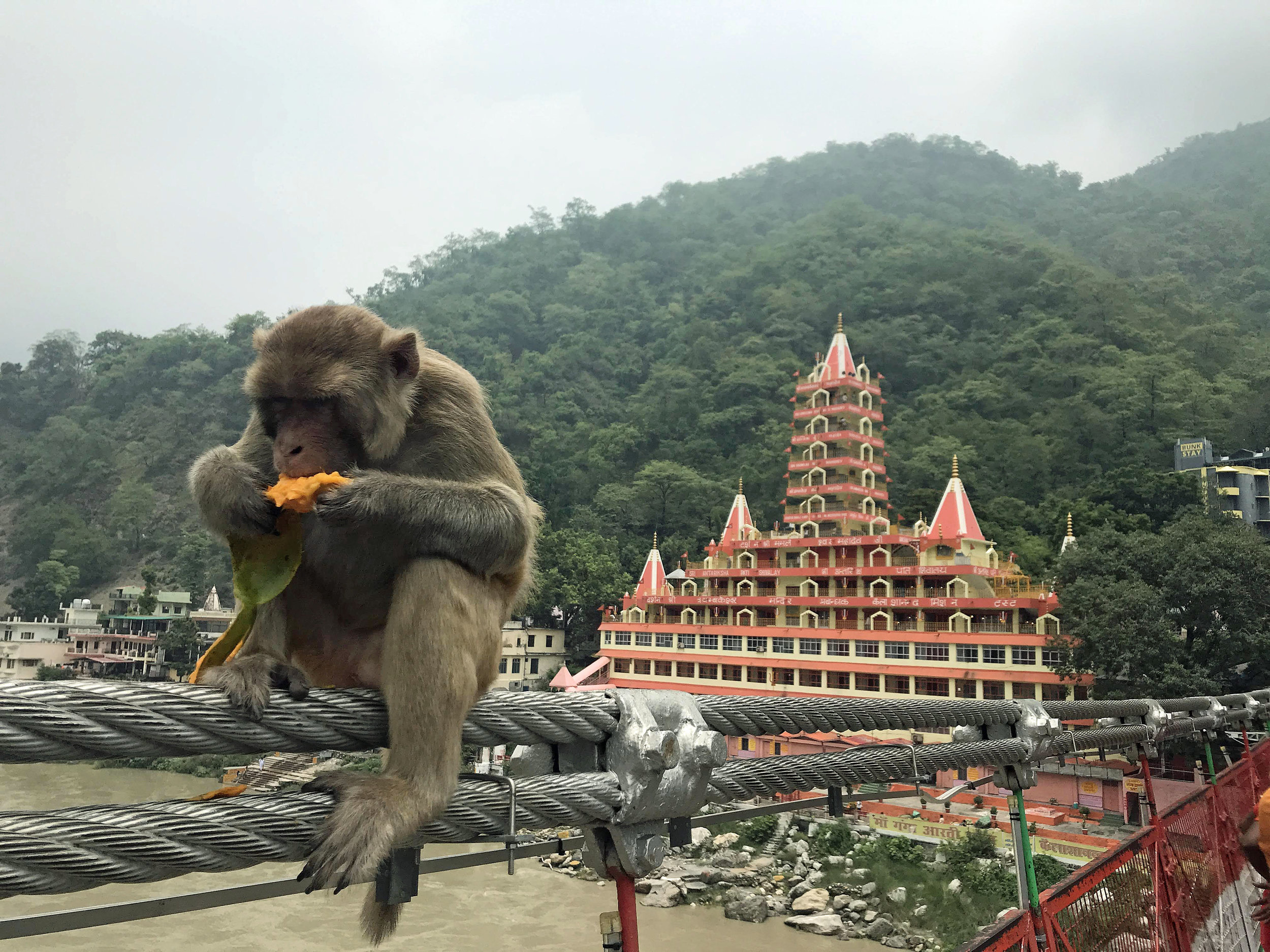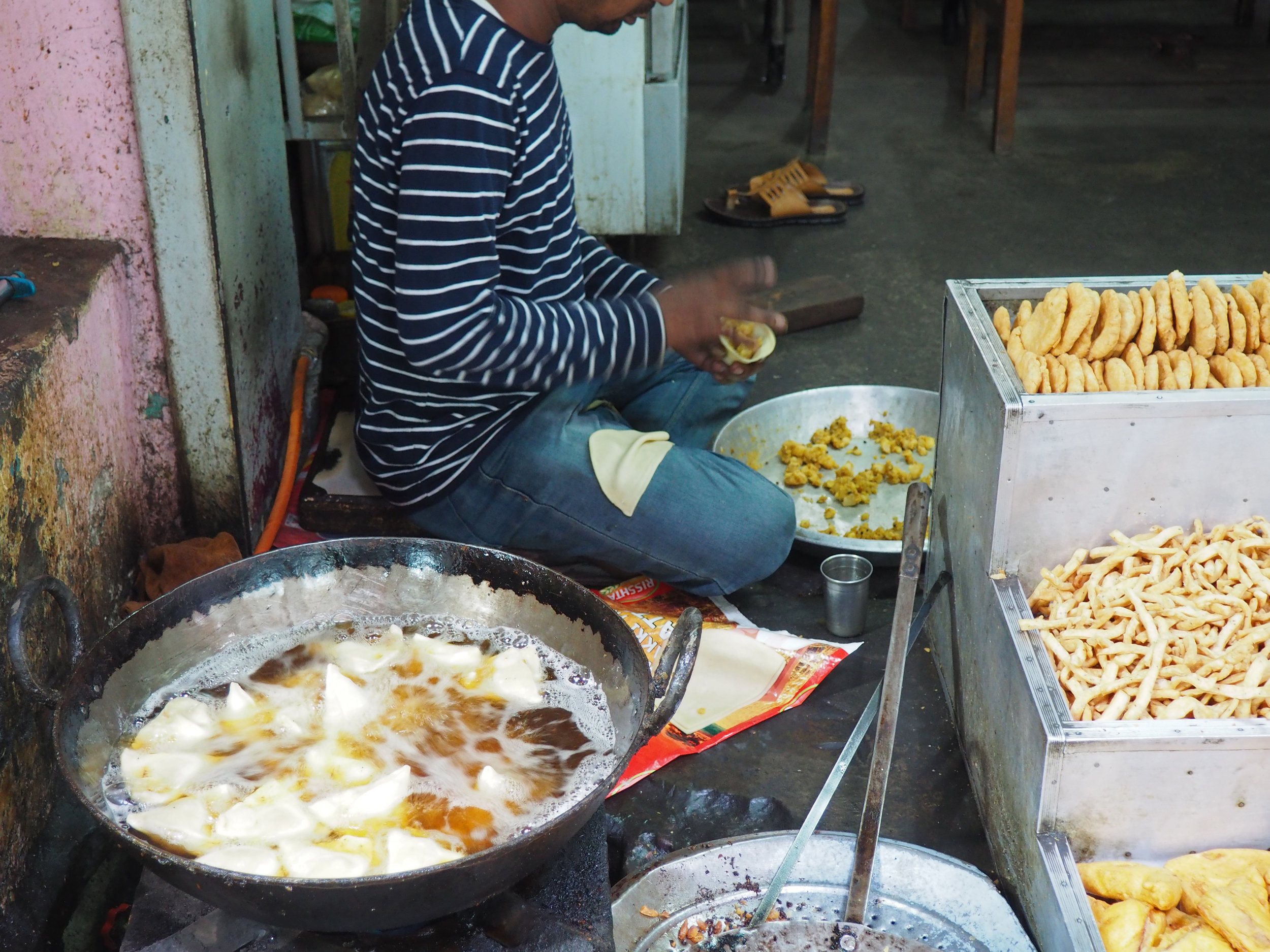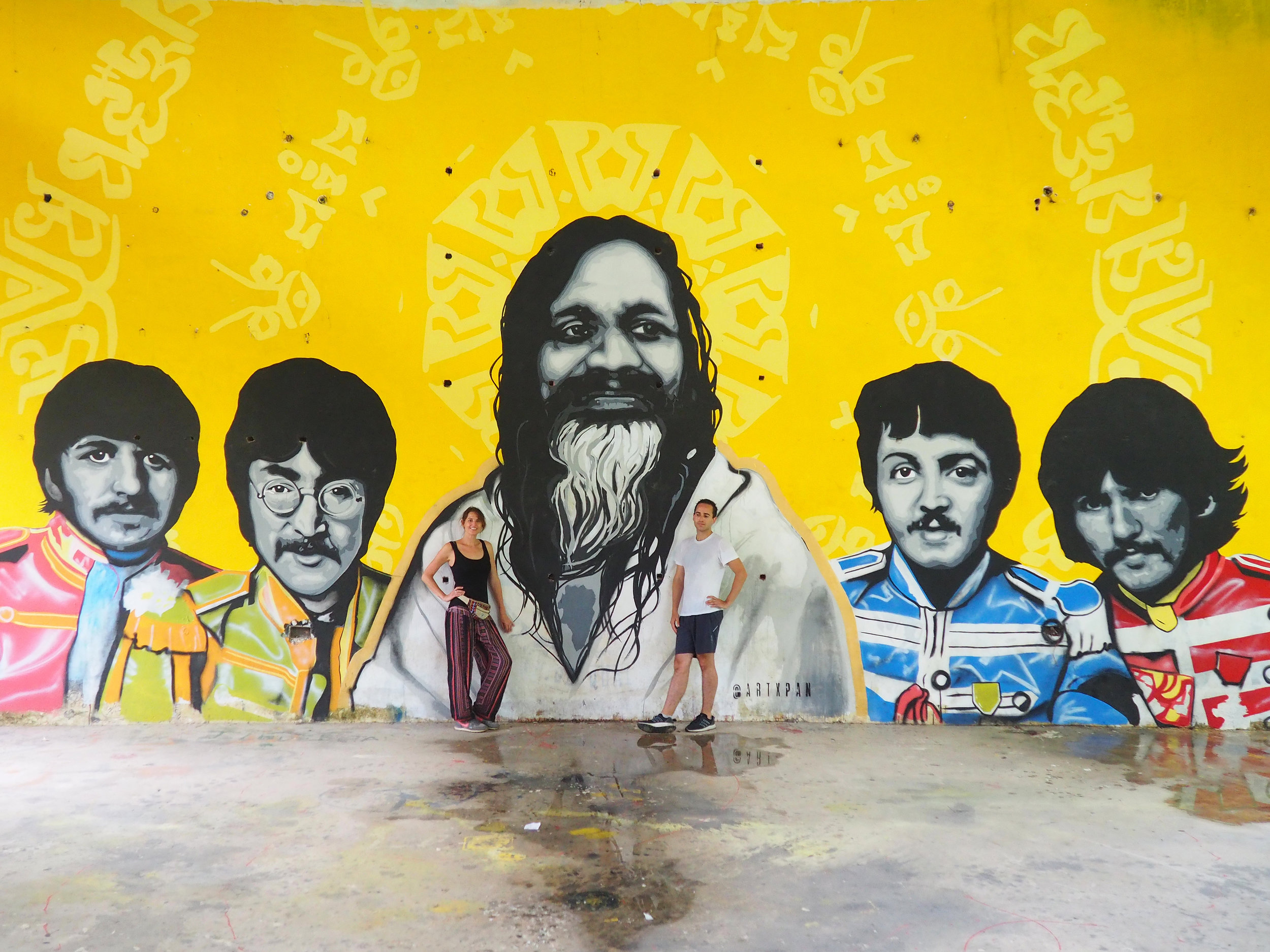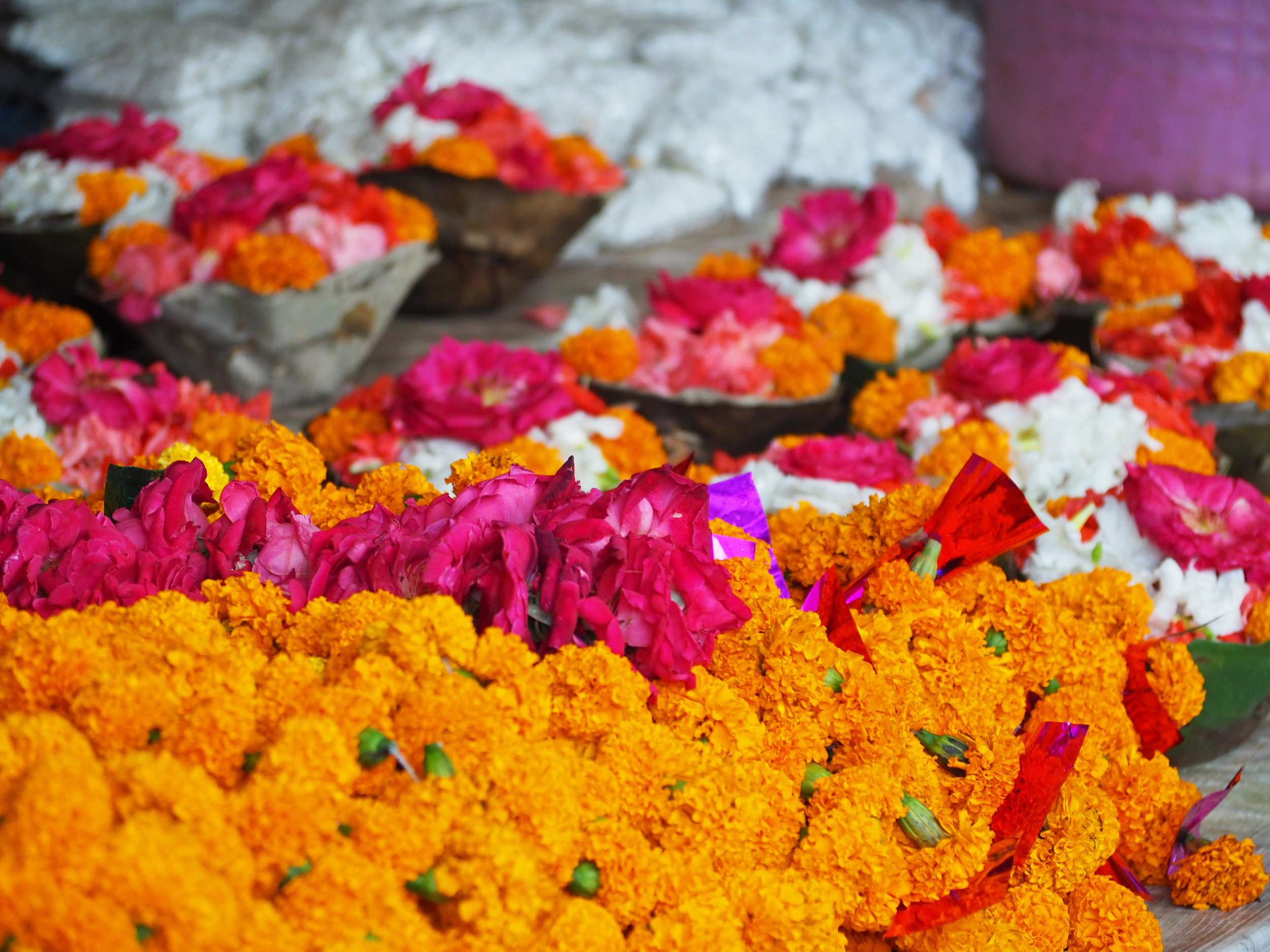With a dwindling bucket list of experiences in India, we checked off one more of Isaiah’s items by taking the local bus from Manali to Kuala. We grabbed seats in the front of the crowded vehicle, holding onto our bags as we made our way along a thin and winding road out of the mountains.
Despite our fears of the bus crashing on one of the highly trafficked hairpin turns, I couldn’t help but appreciate the fertile hills one last time. Houses were built into impossibly steep slopes, every inch of flat land was cultivated, and all around us the earth exploded in shades of green.
We made it to the bus station with a few minutes to spare, giving us just enough time to grab snacks before boarding the 15 hour bus to Rishikesh. Bleary eye, we stepped out of the the bus into the oppressive heat of Rishikesh at 9 AM the following day.
Over breakfast at a rooftop restaurant, we evaluated the weather situation. It was unlike anything I had ever seen. A thick layer of clouds blotted out the sun and combined with hazy air to reduce the visibility to just a few hundred feet. However, the lack of light did nothing to detract from the heat. By the time I took my first sip of coffee the perspiration had started, and before we finished with the meal rivers as sweat had formed beneath my shirt.
Unencumbered by the humidity, we made our way out on foot to explore the town of Rishikesh. Famous due to its selling point as the birthplace of yoga, Rishikesh has long inspired spiritual seekers. The city is also a draw for domestic tourists and pilgrims because it is situated in the foothills of the mighty Himalaya and serves as the origin of the Ganges river.
Hindus consider this body of water to be a living manifestation of their god, meaning they will travel far and wide to pray at its banks and swim in the murky brown waters. We began by descending to the river and crossing it on one of the two footbridges that connect the otherwise split halves of town.
The bridge was pandemonium high above the swift-moving river. We shared a narrow pathway with large groups of visitors taking selfies, locals dodging traffic on motorbikes, and more than few monstrously large cows.
Cattle were incredibly prominent everywhere we turned in Rishikesh. They range from young calves to massive bulls and appear as solitary creatures blocking traffic or in small groups grazing on piles of trash. Because cows are sacred in the Hindu religion, beef is not served in the entire town and there’s even a center on the outskirts of town to care for the animals, which further exacerbates the road-blocking problem.
On the far side of the bridge we caught a glimpse of Rishikesh’s other prominent animal: monkeys. These conniving creatures still around like they own the city, grabbing mangos right out of human hands and causing a general ruckus.
By spinning in a circle we could catch a sight of no less than half a dozen temples that occupy the banks of the Ganges. Unique in their bright orange color and multi-tiered architecture, the temples were utterly baffling to us.
Each one consisted of long white-washed hallways with heavy metal gates which made us feel like we were entering a prison. Inside each cell was a collection or ornately decorated deities which stared back at us with bright eyes and incredulous expressions. Quickly I was weirded out and retreated back to the outdoor surroundings.
Once on the other side of the river, we prowled the main drag in search of an ATM, stopping every 5 seconds for Isaiah to conduct some last minute shopping. Meanwhile, I began observing the local yogi population. Men of all ages were draped in robes of bright orange, carrying around begging tins or sitting on the street to collect handouts. Although I’ve seen such people throughout India, their prominence in Rishikesh was astounding, as we spotted more than a thousand over the course of the day.
Just walking the streets of the town's main markets revealed an overwhelming number of beautiful and astonishing sights. Our eyes were at no lack for vibrant colors from both the people and the produce and our noses feasted on the crazy smells of street foods.
After a brief torrential downpour, it was with slightly more bearable weather that we made our way to The Beatles ashram. The complex where the British band lived during their spiritual quest to India in 1968 is now in disrepair, but has been converted into a sort of ruinous tourist attraction.
Nevertheless, the structures which they used for meditation, practicing yoga and living still remain, each one featuring outlandish 60’s architecture. There were damp cave systems that were once solitary meditation chambers, a sprawling four story building with a series of layered balconies, and even weird stone domes that simultaneously felt both ancient and futuristic.
The large banquet areas and dining halls once handled groups of a few hundred, but the stone was crumbling and the windows were mostly smashed in. Instead, the walls are plastered with artwork in various forms with fading hippie slogans.
The largest open space featured two spectacular floor to ceiling murals of the band, which naturally served as the perfect backdrop for a photo shoot.
We wrapped up our visit by prowling the length of the grounds to take in the quiet atmosphere and enjoy the sights of greenery overtaking concrete. The sky has been threatening to open up with another rain shower all afternoon, so we were hoping for the rains to hold off as we made our way to the next destination: Triveni Ghat.
The riverside temple is a holy place where worshippers come to renew their spirit in the Ganges and plenty of homeless strategically place themselves there to receive handouts. We ended up showing up more than an hour early for the nightly Puja Ceremony, so we spent the extra time people watching on the wide stone promenade which runs parallel to the river and admiring the bountiful bouquets of flowers arranged for the show.
As the sun set and the cloudy sky transitioned from light grey to warm orange to a dramatic deep purple, the ceremony, known as an Aarti, slowly began. The stars of the show were red-robed priests in training, a group of boys and men ranging in age from 15 to 50.
They began by setting up tables with flowers, lamps, and religious icons, then offered blessings to pilgrims who had traveled to the birthplace of the Ganges from far and wide. Eventually they climbed to stand on the tabletops, forming an impressive line of symmetry as the lamps were lit and raised into the sky.
Soon, fire was visible from every angle. As flickering flames were passed around the thickening crowd, each of the priests performed a deft series of synchronized movements with their lamps. The result was energizing; the crowd clapped along with thunderously loud music and suddenly it felt like the night was alive with nature, earth, wind, water, and fire.
The ceremony ended with each member of the crowd depositing flowers into the swift waters of the river, symbolizing the renewal of spirit which draws people from so far away to the holy destination. We did our best to fit in, dropping in boats of flaming flowers which were quickly extinguished by the rapid water, thus ending our wild day in Rishikesh.
